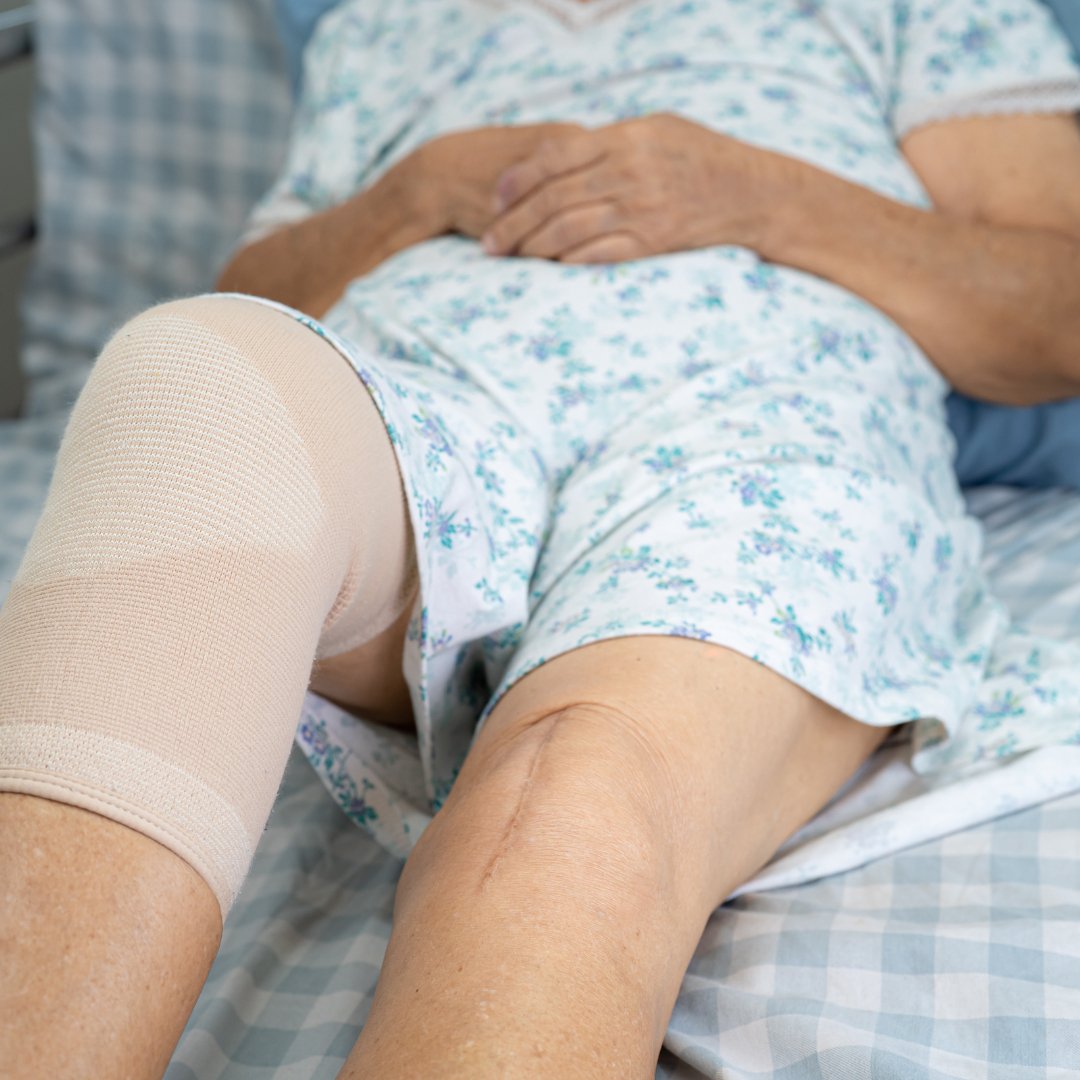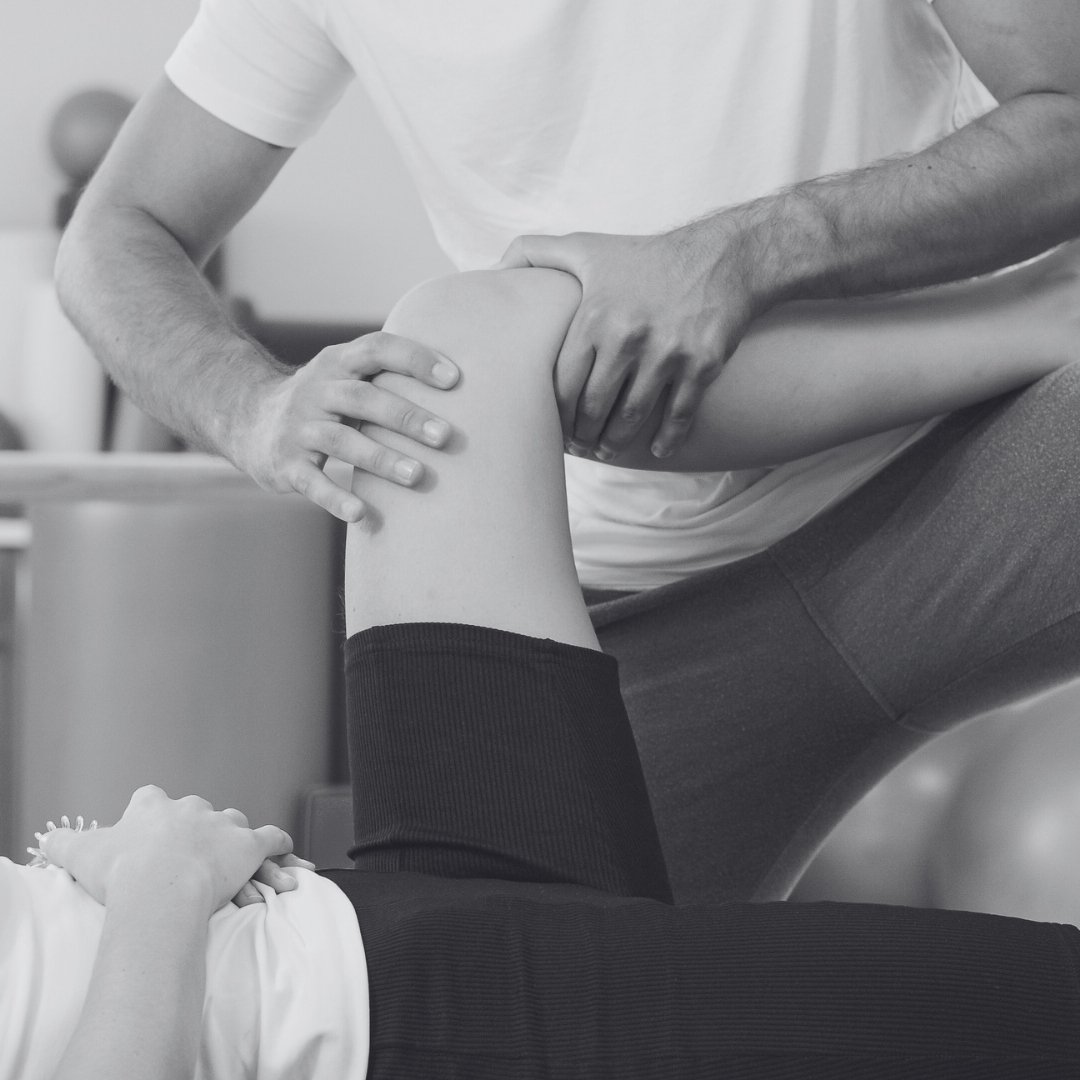
What Causes Knee Stiffness?
Learn why knee stiffness isn’t only caused by aging and discover strategies to ease pain, improve mobility, and support long-term knee health.
When you’re going through knee replacement recovery or dealing with nagging knee pain that seems to stick around no matter what you do, finding the right treatment can feel like an endless scavenger hunt. One therapy that has been getting a lot of attention is H-Wave therapy. It’s been used as part of rehab plans to ease pain, promote healing, and help people move forward with less discomfort. But what exactly is it, and how does it help with knee pain?
H-Wave therapy is a form of electrical stimulation that uses a unique type of current to target both nerves and muscles. Unlike the traditional TENS unit that focuses mainly on blocking pain signals, H-Wave aims to go a step further. The stimulation is designed to improve circulation, reduce muscle spasms, and promote healing at the cellular level. Think of it like sending tiny signals to your body that say, “Hey, let’s get things moving and heal more effectively.”
The therapy works by applying small electrode pads to your skin near the area of pain. Gentle electrical impulses are delivered, and you feel a mild pulsing sensation. The difference with H-Wave is the type of waveform it uses, which is reported to be more effective in stimulating long-term changes in the muscles and tissues.

H-Wave therapy can be used by a wide range of people dealing with pain or limited mobility. If you’ve had total knee replacement surgery, your therapist might introduce H-Wave to help with swelling and discomfort in the weeks that follow. It’s also used for people with chronic knee pain who need a safe option that does not involve taking more medications.
You don’t need to be fresh out of surgery to benefit from it. I’ve seen people months after their knee replacement still find relief with H-Wave. It can be especially helpful for you if stiffness or persistent swelling is limiting how much you can move. The pulsing stimulation helps encourage circulation, which supports better flexibility and motion.
Research into H-Wave therapy has shown promising results, especially in reducing chronic pain and improving functional outcomes. H-Wave was also found to help improve blood flow and reduce pain in older adults managing musculoskeletal issues
The evidence suggests that H-Wave is not just about covering up pain signals. It encourages changes in how your body heals and adapts, which makes it a unique tool for long-term improvement. For someone going through knee replacement recovery, this can be the difference between feeling stuck in a cycle of swelling and pain or finally turning the corner toward better movement.
There are a few key benefits that make H-Wave therapy stand out when used during knee replacement recovery or to help manage chronic knee pain.
The pulsing stimulation can quiet down overactive nerves and reduce your perception of pain. This makes it easier for you to do your exercises and move more comfortably.
Better blood flow means your tissues get more oxygen and nutrients. This supports healing after surgery and can reduce that frustrating swelling that sometimes lingers.
H-Wave helps relax muscles, which can be especially useful if your knee feels tight or locked up. Easing those spasms makes stretching and strengthening exercises more effective.
Unlike treatments that only provide temporary relief, H-Wave is aimed at stimulating long-term improvements in your tissues. It’s about giving your knee the environment it needs to keep progressing.

People suffering from chronic pain are often skeptical about trying yet another device, only to be pleasantly surprised when H-Wave made their exercises less painful and their swelling easier to manage. It’s not a magic fix, but when combined with a solid rehab program, it can be an effective partner in your knee journey. You still need to do the work, and your strengthening and stretching exercises matter, but H-Wave makes that work feel a little more doable.
If you’re thinking about adding H-Wave therapy to your rehab, talk to your physical therapist about whether it’s a good fit for you. Not everyone will respond the same way, but the research shows it’s worth exploring as part of your plan. Pairing it with a structured program like GoKnee can help you make the most of the progress you’re aiming for.
GoKnee is a complete knee recovery program that guides you through prehab, post-operative rehab, and long-term maintenance. The program allows you to safely perform advanced techniques from home, with a knee device that mimics the hands of a therapist and exercise guidance that keeps you moving forward. Learn more about how it works here.
At the end of the day, your knee replacement recovery journey is about more than just waiting for healing to happen. It’s about taking advantage of tools and techniques that help you feel stronger, more mobile, and more confident. Good luck on your knee journey!
Good knees start here. Don’t miss a step, subscribe to KneeMail for free tips from knee expert Shehla Rooney, PT!

Learn why knee stiffness isn’t only caused by aging and discover strategies to ease pain, improve mobility, and support long-term knee health.

Learn the difference between PTs and PTAs in knee physical therapy, their roles, and how it impacts your care and co-pay.

Discover knee injuries and conditions that may lead to total knee replacement and learn options to ease chronic pain.

Discover the real cost of knee replacement surgery, from hospital bills to PT co-pays, insurance coverage, and hidden expenses.

Knee replacement rehab has shifted from inpatient care to home-based exercises. Learn why your daily routine now matters more than ever.